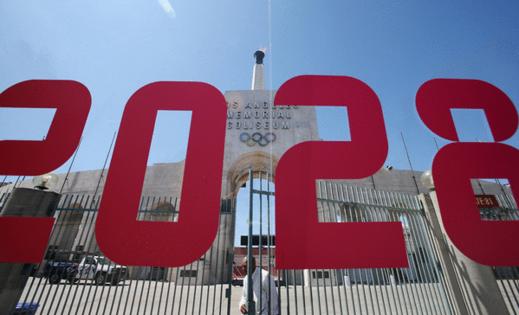LA28 plans ambitious Coliseum makeover, building a track on top of the existing field
Published in Olympics
LOS ANGELES — There was no way to bring the Olympics back to Los Angeles for a third time without holding track and field at the Coliseum. Not with all those ghosts knocking around.
Babe Didrikson Zaharias competed at the historic stadium during the 1932 Summer Games, winning the javelin and hurdles. Carl Lewis won four golds there in 1984, a competition that also featured the infamous Zola Budd-Mary Decker collision in the 3,000 meters.
But as local organizers devised plans for the 2028 Olympics, they faced a basic dilemma: There wasn't enough room on the Coliseum floor for, well, a track.
Renovations in the early 1990s added 14 rows of seats at the bottom of the bowl, moving the stands closer for football, shrinking the size of the field. The LA28 organizing committee needed a temporary fix.
The solution will require thousands of columns and metal plates to build a new floor about 11 feet above the current one. Because the bowl slopes away in all directions, this elevated surface will have room to stretch out, covering all those added seats.
For a city that has enough existing world-class venues to host the Games without major construction, the $100 million project represents what LA28 chairman Casey Wasserman calls "the most expensive and probably complicated thing we actually have to build."
Not everyone is thrilled about the stadium's role for 2028. A Coliseum official has expressed disappointment about a proposed opening ceremony that would begin under his renowned peristyle, but shift to the newer, glitzier SoFi Stadium for formal protocols.
"The torch and the parade of nations and the Olympic oath all should take place at the Coliseum," said George L. Pla, president of the Coliseum Commission.
LA28 executives insist they are committed to showcasing the historic venue at both the Summer Games and the subsequent Paralympics. John Harper, chief operating officer, described it as "a beacon."
Plans for track competition there began several years ago when organizers researched technology that had been used for European sports events. At the 2014 Commonwealth Games in Glasgow, Scotland, workers installed 6,000 columns and nearly 200,000 tons of steel components to create an elevated field.
...continued
©2024 Los Angeles Times. Visit latimes.com. Distributed by Tribune Content Agency, LLC.







Comments